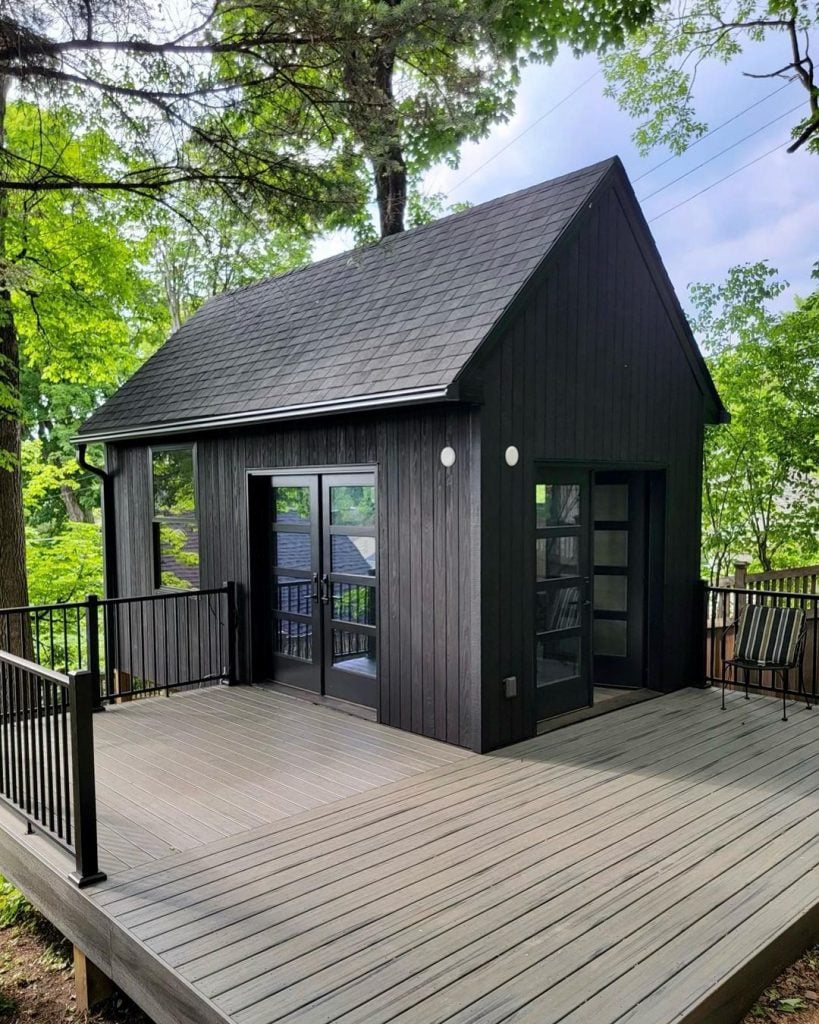Shou Sugi Ban, a traditional Japanese method of wood preservation, is more than just a technique; it’s a testament to the enduring wisdom of ancient craftsmanship.
This method, also known as Yakisugi, has its roots in 18th-century Japan and was primarily used for preserving cedar (Sugi) wood, which was abundant in the country.
The Historical Roots
The history of Shou Sugi Ban is as rich as it is practical. Developed in Japan during the Edo Period, it was initially used for residential and agricultural structures, especially in regions prone to high humidity and salt air.
The technique involved charring the surface of the Sugi wood, a practice that was discovered to significantly enhance the wood’s resistance to weather and pests.
The Process of Shou Sugi Ban
The traditional process is fascinating in its simplicity and effectiveness. It involves charring the surface of the cedar boards until the wood begins to blacken. This creates a carbonized layer on the surface. After charring, the boards are cooled, cleaned, and often finished with natural oils.
The depth of charring can vary, resulting in different textures and shades, from deep black to dark brown depending on the level of char and finishing methods applied.
Benefits of Shou Sugi Ban
- Durability: The carbonized layer provides remarkable protection against environmental elements, extending the life of the wood.
- Rot Resistance: The process makes the wood resistant to water, reducing the risk of decay.
- Pest Prevention: The charred surface is unattractive to insects and other pests, minimizing damage.
- Fire Resistance: Surprisingly, the charred surface is less flammable than untreated wood.
- Low Maintenance: Once treated, the wood requires minimal upkeep, making it an attractive choice for modern construction.
- Aesthetic Appeal: The unique texture and color range of Shou Sugi Ban wood is visually striking and offers a rustic yet elegant appeal.
Shou Sugi Ban in Modern Architecture

Today, Shou Sugi Ban has transcended its traditional boundaries and found a place in contemporary architecture and design around the world. Its ability to blend functionality with aesthetic beauty has made it a favorite among architects and designers.
From exterior cladding to interior features and furniture, the charred wood brings a touch of timeless elegance to modern structures. Its versatility is evident in its use in both traditional and contemporary settings, bridging the gap between the old and the new.
Conclusion
Shou Sugi Ban is more than just a method of wood preservation; it’s a symbol of the harmony between nature, functionality, and beauty. As we continue to look for sustainable and durable building materials, the ancient wisdom of Shou Sugi Ban offers a compelling solution, marrying the past with the present in a beautiful and practical way. Its resurgence in modern architecture is a testament to the enduring value of this ancient craft, reminding us of the wisdom inherent in traditional practices.
